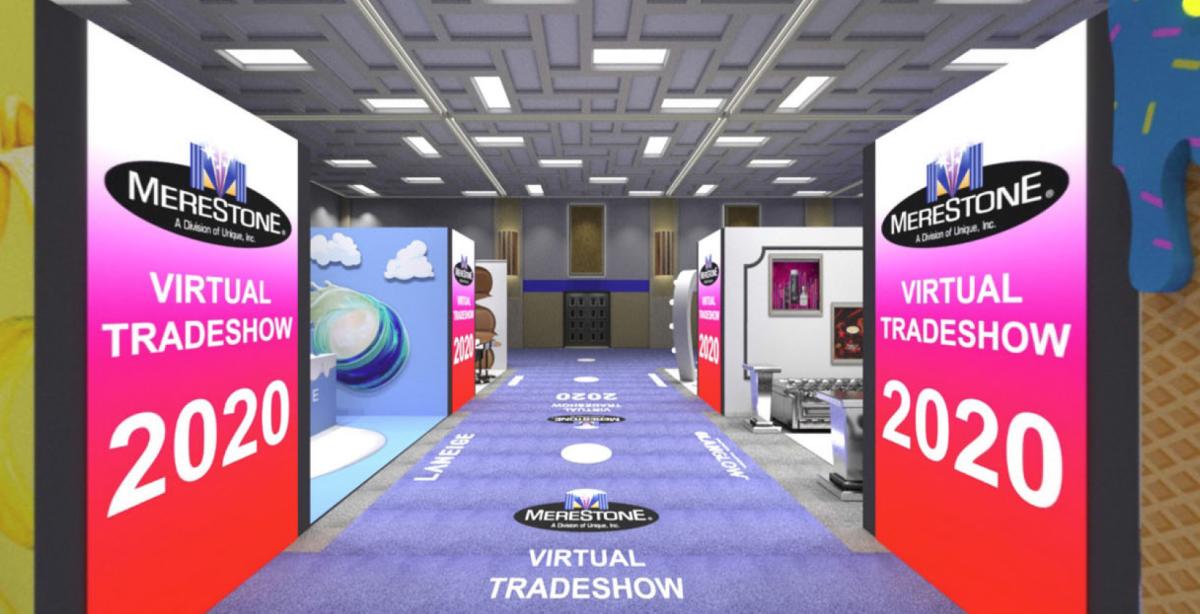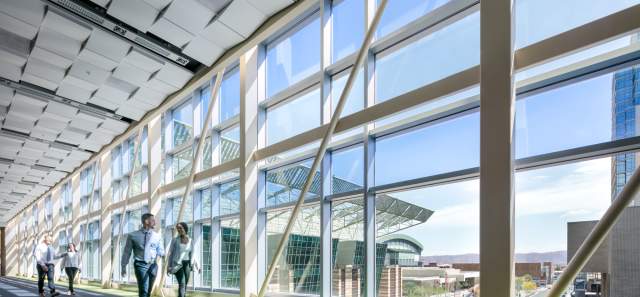Virtual & Hybrid Meetings: Bridging the Gap and Driving Connection
Here’s how Phoenix’s event business has adapted deftly in the pandemic.
While association meeting planners have long-been creating “virtual” or “hybrid” events, these terms might have once seemed jargon-y or even foreign to the casual attendee. But when the coronavirus pandemic changed the landscape of traditional face-to-face events, the general public suddenly understood the notion of both types of events as practical ways to connect, communicate—and keep doing business—even amid the most challenging of circumstances.
Hybrid events (with both live and off-site audiences) and virtual events (those with only online audiences) are not new formats—they’ve been especially popular as a way to connect large constituencies of employees, clients or members spread across the country or globe. But the COVID-19 crisis only expanded these formats’ utility.
“Before COVID, 50 percent of our clients had their events broadcasted live to create a hybrid event—we even brought in keynote presenters remotely,” says Ross Snyder, president of the Phoenix-based production company White Tie Productions. But now, he says, “We’ve seen an increase in 100-percent virtual events over the past few months, and are starting to see a comeback of hybrid events with smaller in-person audiences as cities start to relax restrictions.”
The key to making these events work well for the audience, Snyder adds, is allowing for two-way communication throughout the course of the program—not just blasting out content without the possibility of meaningful engagement and interaction.
“Answering questions from the audience in real time, using polling functionalities to get the audience’s opinion, creating engagement activities that the audience can do while watching, and facilitating small group breakout-style meetings are all great ways to keep your audience connected when they can’t be together,” Snyder says.
 Photo courtesy of White Tie Productions.
Photo courtesy of White Tie Productions.
Being creative also opens the door for many new possibilities, says Rob Hill, CEO of Merestone, a Phoenix-based, full-service production company that has specialized in streaming events for 15 years. By adding in a cooking class, a virtual happy hour [or] virtual entertainment for excitement and the ‘wow’ factor, he says, you provide attendees with an opportunity to experience the flavor of a destination.
“The challenge of these events will always be trying to recapture the excitement and energy of a live, in-person event,” he says. “To truly engage audiences in this new highly competitive, digital landscape, you need to deliver a top-notch, virtual event experience that offers superior production value to its audience.”
In addition to engagement, maintaining a visually interesting environment is key. To keep things stimulating and eye catching, Snyder suggests presenting from a unique venue or backdrop.
Phoenix remains competitive in the meetings market, thanks to its abundance of unique venues and expert event professionals. “We are fast growing with more and more talent choosing Phoenix as home,” Snyder says. “Most importantly, we are a big city that feels like a small town.”
With a significant spike in confirmed U.S. coronavirus cases since Memorial Day, it seems clear the pandemic is likely to remain a concern for the country, and certainly the live-event industry, into the future. But it’s through creative solutions, like the rise of innovative virtual and hybrid meetings, that association planners can help their memberships remain informed, connected and mobilized.

Virtual trade show rendering courtesy of Merestone.
“The key to getting through this is working together and being adaptable. Everyone is ready to get back to it, but recognizes that the packed meeting spaces we are used to aren’t an option just yet,” Snyder says. “The audiences are itching for content, and even though we can’t all be together in person, groups still need to get their messages out.”
Indeed, the restrictions on gatherings have provided plenty of opportunities and incentives to innovate with virtual or hybrid components. And even—or especially—when innovative ideas come out of a crisis situation, the attendee experience can be overwhelmingly positive. “Although they’d rather be there in person, they appreciate that we just didn’t toss in the towel—and got creative [instead],” Snyder says.
This story was written and published by Associations Now. For more meetings trends in Phoenix, visit AssociationsNow.com.
Meet In Phoenix
Order A Meeting Planner Guide
Our Meeting & Travel Planner Guide has the details on things to do downtown, the convention center…
Get the Meetings Newsletter
Stay informed on openings and renovations, what’s new in downtown and more.
Planner Toolkit
We've got photos, maps, planning guides and more for meeting planners and their delegates.





